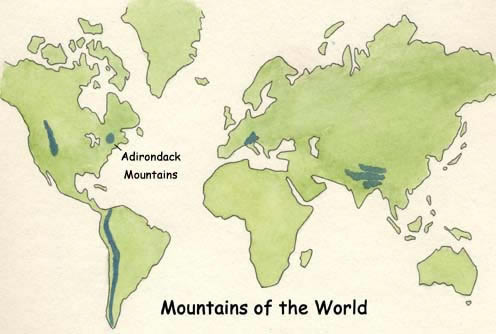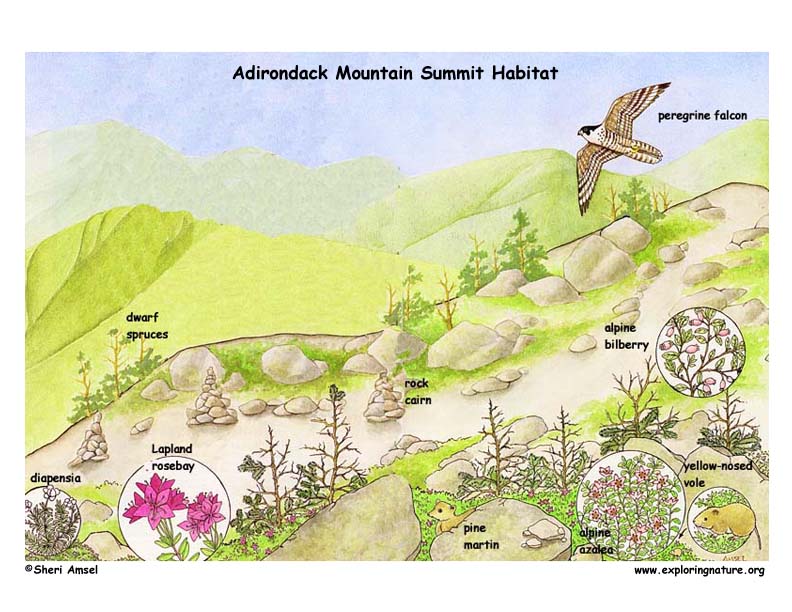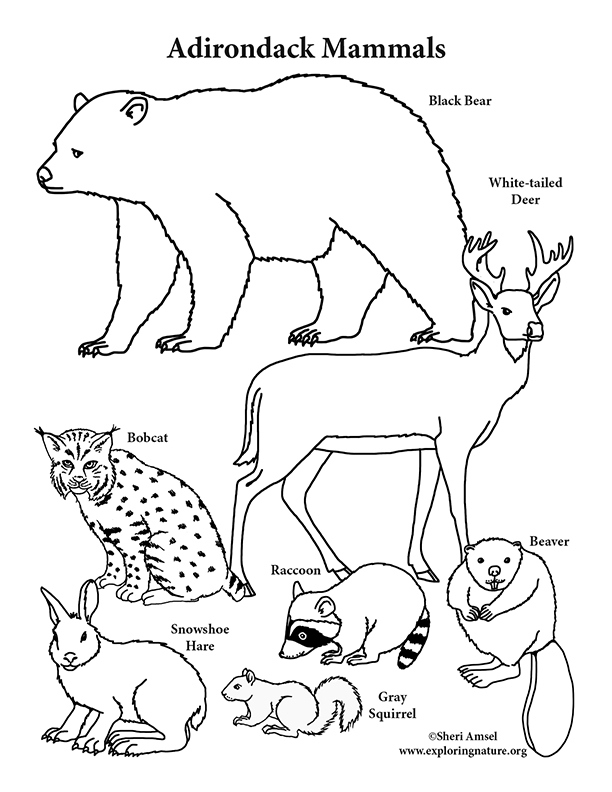


The Adirondack Mountains are in Upstate New York. They are in a 6-million-acre park protected as forever wild.
The mountaintops in the Adirondack Mountains are like islands of alpine habitat left when the glaciers retreated. They are a look into the past. These fragile habitats have to survive high and low temperatures and moisture and are slow to grow back. They are also hurt by too many people hiking on them. With a short growing season of just a few weeks each summer, this habitat has the toughest kinds of creatures.
Peregrine falcons, voles and pine marten can be found hunting for food during the short summer on these mountaintops. The peregrine falcon was once close to extinction from the deadly affects of the pesticide DDT. Now gone from much of its former range, the peregrine nests on city skyscrapers hunting pigeons with mid-air hunting dives. They have also come back in their mountain habitats where scientists have reintroduced them after DDT was banned. It is thought that falcons can dive at speeds of 180 miles per hour, making them the fastest animals in the world.
Flowers found nowhere else in the area bloom on these mountaintops, left over from the time of the glaciers. The plants grow up, make flowers and spread their seeds in a very short growing season. These summits get a lot of sun, wind, cold and wet. Trees that grow tall in the forest below can't make it on the mountaintops. Here they manage to cling to rocks, but they are small and funny-shaped. Many alpine flowers can survive in this rough place. Lapland rosebay, diapensia, alpine azalea and bilberry are found nowhere else in the region. Left on mountaintops when the glaciers pulled back, these plants are usually only found in arctic tundra. Their biggest danger is being trampled by visiting hikers. Now rangers spend the summer on the mountaintops teaching people to walk on the rocks and not walk on the alpine plants.
When you research information you must cite the reference. Citing for websites is different from citing from books, magazines and periodicals. The style of citing shown here is from the MLA Style Citations (Modern Language Association).
When citing a WEBSITE the general format is as follows.
Author Last Name, First Name(s). "Title: Subtitle of Part of Web Page, if appropriate." Title: Subtitle: Section of Page if appropriate. Sponsoring/Publishing Agency, If Given. Additional significant descriptive information. Date of Electronic Publication or other Date, such as Last Updated. Day Month Year of access < URL >.
Amsel, Sheri. "Adirondack Mountains of Upstate New York" Exploring Nature Educational Resource ©2005-2024. December 13, 2024
< http://www.exploringnature.org/db/view/Adirondack-Mountains-of-Upstate-New-York >




